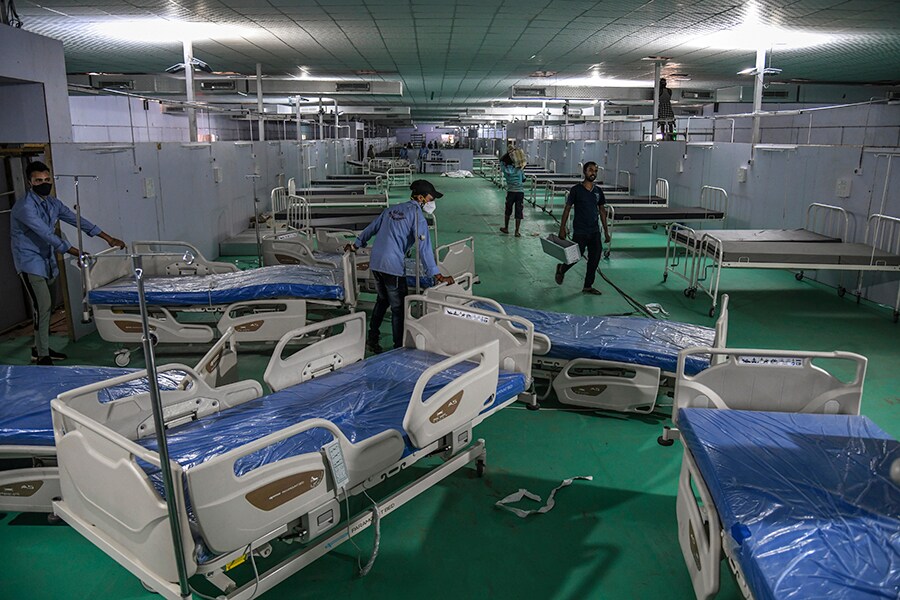
India's strict rules on foreign aid snarl Covid-19 donations
Nongovernmental organisations help provide basic health services in India, picking up the slack in a country where government spending in that area totals 1.2 percent of the gross domestic product
 Workers setup a temporary COVID-19 treatment facility at Ramlila Ground in Delhi, India, on May 11, 2021. The coronavirus crisis in India is reaching a new phase and spreading to areas with fewer resources; Image: Atul Loke/The New York Times
Workers setup a temporary COVID-19 treatment facility at Ramlila Ground in Delhi, India, on May 11, 2021. The coronavirus crisis in India is reaching a new phase and spreading to areas with fewer resources; Image: Atul Loke/The New York Times
Bake sales on Instagram. Online fundraisers involving Hollywood celebrities. Pledges of aid from companies like Mastercard and Google. A middle-of-the-night flight by a FedEx cargo plane transporting thousands of oxygen concentrators and masks.
India’s devastating surge in COVID-19 cases has galvanized corporations, nonprofit organizations and individuals in the United States into raising millions of dollars and sending medical supplies to the nation of 1.4 billion.
But a sweeping change to India’s decades-old law governing foreign donations is choking off foreign aid just when the country needs it desperately. The amendment, passed by the government of Prime Minister Narendra Modi in September with little warning, limits international charities that donate to local nonprofits.
The effect is far-reaching. Almost overnight, the amendment gutted a reliable source of funding for tens of thousands of nongovernmental organizations, or NGOs, that were already stretched thin by the pandemic. It prompted international charities to cut back giving that supported local efforts — and supplemented the government’s work — in fields such as health, education and gender.
The amended law has forced newly formed charities to rush to find NGOs that can accept their donations without tripping legal wires. And it has smothered nonprofits in red tape: To receive foreign funds, charities must get affidavits and notary stamps and open bank accounts with the State Bank of India, which is government-owned.
©2019 New York Times News Service




